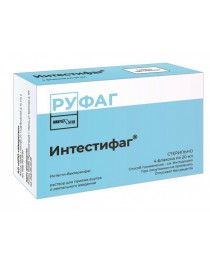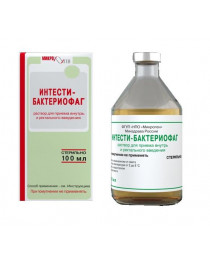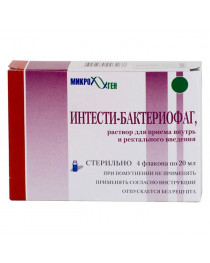Bacteriophages phage therapy

 Bacteriophages or "phage" are viruses that invade bacterial cells and, in the case of lytic phages, disrupt bacterial metabolism and cause the bacterium to lyse [destruct]. Phage Therapy is the therapeutic use of lytic bacteriophages to treat pathogenic bacterial infections.
Bacteriophages or "phage" are viruses that invade bacterial cells and, in the case of lytic phages, disrupt bacterial metabolism and cause the bacterium to lyse [destruct]. Phage Therapy is the therapeutic use of lytic bacteriophages to treat pathogenic bacterial infections.
Bacterial Host Specificity
The bacterial host range of phage is generally narrower than that found in the antibiotics that have been selected for clinical applications. Most phage are specific for one species of bacteria and many are only able to lyse specific strains within a species. This limited host range can be advantageous, in principle, as phage therapy results in less harm to the normal body flora and ecology than commonly used antibiotics, which often disrupt the normal gastrointestinal flora and result in opportunistic secondary infections by organisms such as Clostridium difficile. The potential clinical disadvantages associated with the narrow host range of most phage strains is addressed through the development of a large collection of well-characterized phage for a broad range of pathogens, and methods to rapidly determine which of the phage strains in the collection will be effective for any given infection.
Advantages Over Antibiotics
Phage therapy can be very effective in certain conditions and has some unique advantages over antibiotics. Bacteria also develop resistance to phages, but it is incomparably easier to develop new phage than new antibiotic. A few weeks versus years are needed to obtain new phage for new strain of resistant bacteria. As bacteria evolve resistance, the relevant phages naturally evolve alongside. When super bacterium appears, the super phage already attacks it. We just need to derive it from the same environment. Phages have special advantage for localized use, because they penetrate deeper as long as the infection is present, rather than decrease rapidly in concentration below the surface like antibiotics. The phages stop reproducing once as the specific bacteria they target are destroyed. Phages do not develop secondary resistance, which is quite often in antibiotics. With the increasing incidence of antibiotic resistant bacteria and a deficit in the development of new classes of antibiotics to counteract them, there is a need to apply phages in a range of infections.
Lytic phages are similar to antibiotics in that they have remarkable antibacterial activity. However, therapeutic phages have some advantages over antibiotics, and phages have been reported to be more effective than antibiotics in treating certain infections in humans and experimentally infected animals.
The Russian Federation has currently the largest-scale production of bacteriophages. Mikrogen, a research and production facility, and the world leader in this area, manufactures a wide range of phage preparations. Therapeutic bacteriophages are also produced in Georgia, at the Eliava International Phagotherapy Center, which comprises both production facilities and a clinic with a vast collection of bacteriophages. European and the United States clinics, where phage therapy has not been officially approved yet, cooperate with this center under a medical tourism program. The Phage Therapy Unit with the Institute of Immunology and Experimental Therapy of the Polish Academy of Sciences produces bacteriophage preparations for experimental clinical application when treating patients who are non-sensitive to antibiotics
Comparison of the Prophylactic and/or
Therapeutic Use of Phages and Antibiotics
| Bacteriophages | Antibiotics | Comments |
| Very specific (i.e., usually affect only the targeted bacterial species); therefore, dysbiosis and chances of developing secondary infections are avoided (15). | Antibiotics target both pathogenic microorganisms and normal microflora. This affects the microbial balance in the patient, which may lead to serious secondary infections. | High specificity may be considered to be a disadvantage of phages because the disease-causing bacterium must be identified before phage therapy can be successfully initiated. Antibiotics have a higher probability of being effective than phages when the identity of the etiologic agent has not been determined. |
| Replicate at the site of infection and are thus available where they are most needed (59). | They are metabolized and eliminated from the body and do not necessarily concentrate at the site of infection. | The "exponential growth" of phages at the site of infection may require less frequent phage administration in order to achieve the optimal therapeutic effect. |
| No serious side effects have been described. | Multiple side effects, including intestinal disorders, allergies, and secondary infections (e.g., yeast infections) have been reported (76). | A few minor side effects reported (17, 58) for therapeutic phages may have been due to the liberation of endotoxins from bacteria lysed in vivo by the phages. Such effects also may be observed when antibiotics are used (42). |
| Phage-resistant bacteria remain susceptible to other phages having a similar target range. | Resistance to antibiotics is not limited to targeted bacteria. | Because of their more broad-spectrum activity, antibiotics select for many resistant bacterial species, not just for resistant mutants of the targeted bacteria (47). |
| Selecting new phages (e.g., against phage-resistant bacteria) is a relatively rapid process that can frequently be accomplished in days or weeks. | Developing a new antibiotic (e.g., against antibiotic-resistant bacteria) is a time-consuming process and may take several years (16, 51). | Evolutionary arguments support the idea that active phages can be selected against every antibiotic-resistant or phage-resistant bacterium by the ever-ongoing process of natural selection. |


















